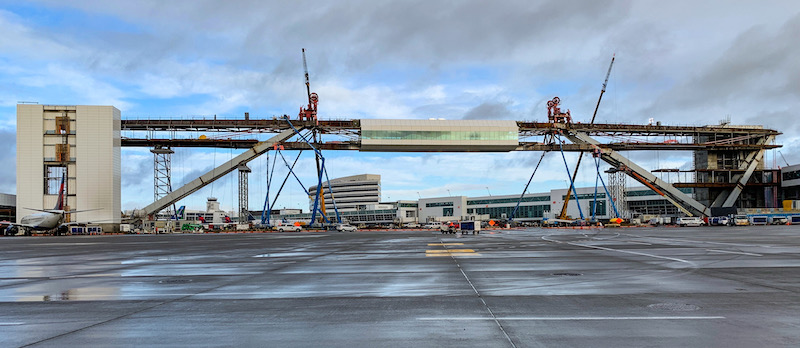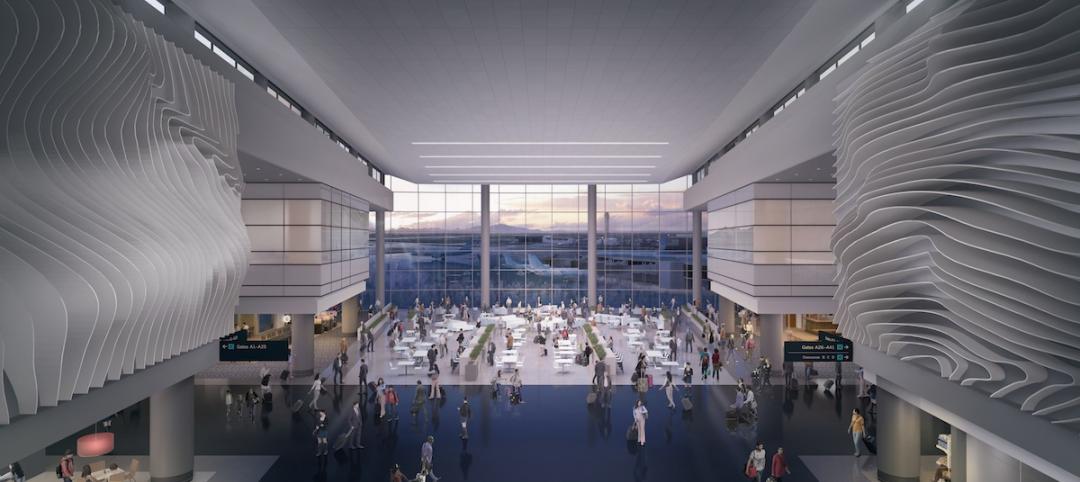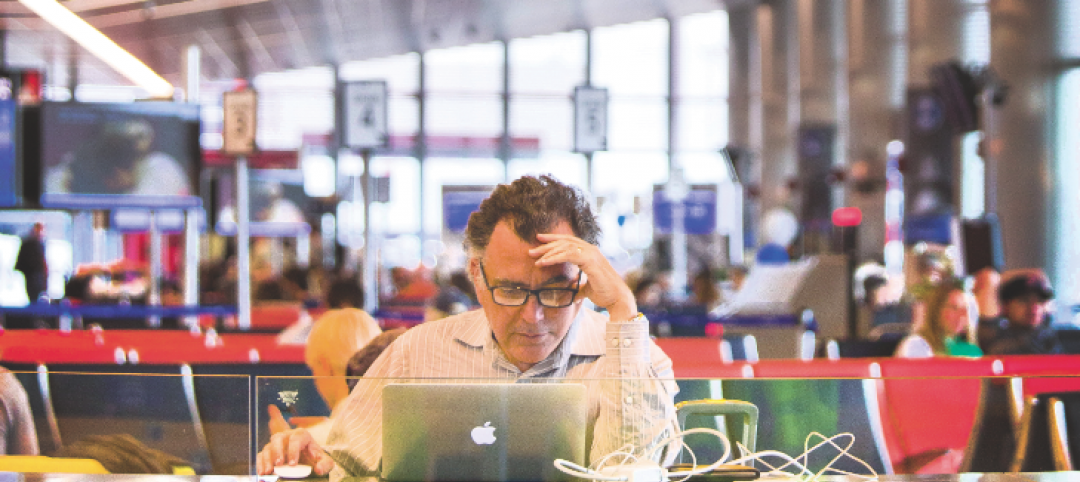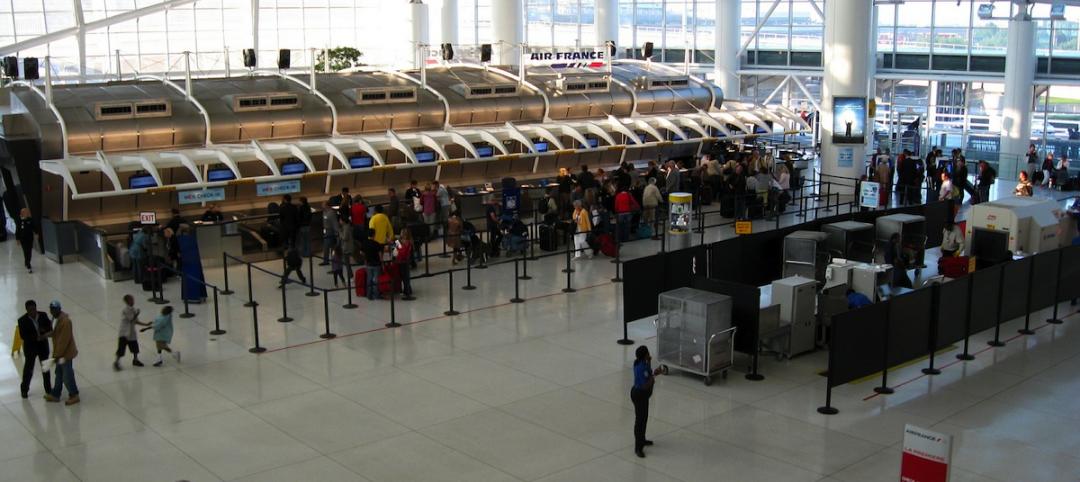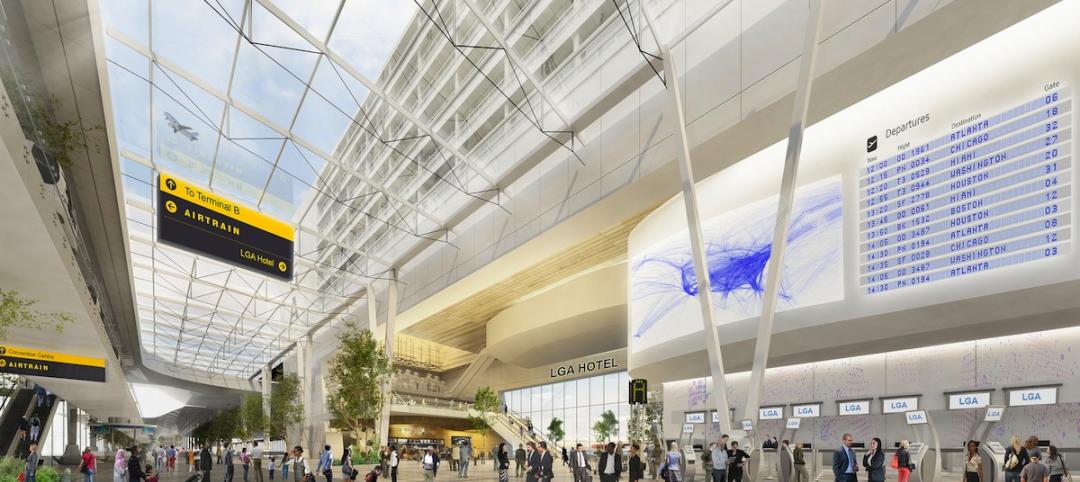Seattle Tacoma International Airport (Sea-Tac) is the nation’s 8th busiest. Last year, the international travelers it handled increased by 15% to account for 5.7 million of the airport’s 51 million passengers.
To provide those travelers with a welcoming environment, the Port of Seattle has been working with a Building Team that includes Clark Construction Group on the design and construction of a new $1 billion International Arrivals Facility (IAF), whose prominent features will include a 780-ft-long elevated pedestrian walkway that spans an active airport taxi lane to connect Sea-Tac’s new International Arrivals Hall with the airport’s South Satellite.
The walkway would be only the third such structure of its kind at any airport, and the world’s longest. (To put its size into perspective, it will be 150 ft longer than Seattle’s Space Needle.)
Its 85 ft of clearance and 610 ft of clear span between footings would be room enough for a 747 jet to get under.
Last month, Clark moved the walkway’s 320-ft-long, 3-million-lb center section into position, using self-propelled modular transport devices. That span was hoisted using four strand jacks, anchored to the walkway’s existing end spans. The end spans were engineered with eight inches of adjustment to fit together precisely to support the weight of the center section.
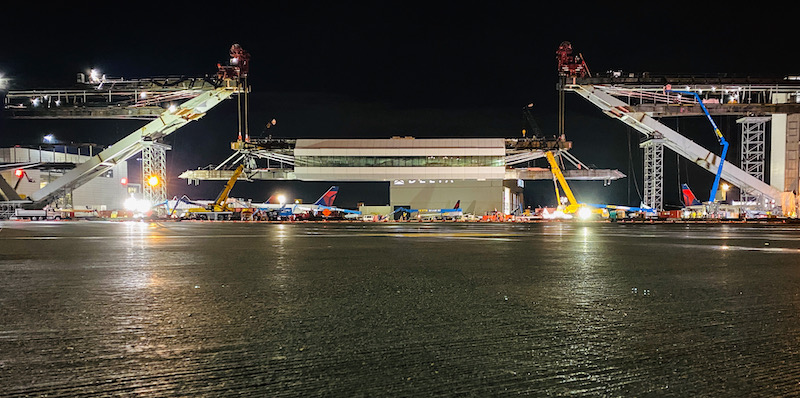
The bridge's center section was moved into position in the middle of the night using self-propelling modular transport devices.
With engineering tolerances between the side and center spans as small as one inch, it was imperative to understand how the three major sections of the walkway would come together before they were connected on site. Thanks to precise planning and laser scanning, the Building Team achieved a fit-up within 3/8 of an inch, enabling the walkway lift to occur without interruption.
Clark Construction Group is the design builder on this project, whose team members include KPFF (SE, Engineer of Record), Skidmore, Owings & Merrill (IAF designer), Schlaich Bergermann Partner (bridge designer), The Erection Company (walkway erector), Supreme Steel (steel fabricator), Mammoet (heavy transport), and KCE Structural Engineers (peer review).
The aerial walkway—which is scheduled for completion later this year—was designed as a cable-stayed bridge and the Accelerated Bridge Construction (ABC) method was applied for the build. The walkway is comprised of 17 components that were prefabricated offsite. (The structural steel alone weighs 3,000 tons.)
Related Stories
Airports | Oct 30, 2015
HOK designs new terminal for Salt Lake City International Airport
The $1.8 billion building will have floor-to-ceiling windows, a spacious central "Canyon," and energy-efficient systems. It will open in 2020.
Airports | Oct 5, 2015
Perkins+Will selected to design Istanbul’s 'Airport City'
The mixed-use development will be adjacent to the Istanbul New Airport, which is currently under construction.
Airports | Sep 30, 2015
Takeoff! 5 ways high-flyin' airports are designing for rapid growth
Nimble designs, and technology that humanizes the passenger experience, are letting airports concentrate on providing service and generating revenue.
Airports | Sep 23, 2015
JFK Airport's dormant TWA terminal will be reborn as a hotel
After 15 years of disuse, the Googie architecture-inspired TWA Flight Center at New York’s John F. Kennedy International Airport will be transformed into a hotel. Gizmodo reports that the city’s Port Authority chose a renovation proposal from Jet Blue this week.
Giants 400 | Sep 17, 2015
AIRPORT SECTOR GIANTS: KPF, Hensel Phelps, Jacobs top rankings of nation's largest airport terminal sector AEC firms
BD+C's rankings of the nation's largest airport terminal sector design and construction firms, as reported in the 2015 Giants 300 Report.
Airports | Aug 31, 2015
Surveys gauge users’ satisfaction with airports
Several surveys gauge passenger satisfaction with airports, as flyers and airlines weigh in on technology, security, and renovations.
Airports | Aug 31, 2015
Small and regional airports in a dogfight for survival
Small and regional airports are in a dogfight for survival. Airlines have either cut routes to non-hub markets, or don’t provide enough seating capacity to meet demand.
Airports | Aug 31, 2015
Airports expand rental car facilities to ease vehicular traffic at their terminals
AEC teams have found fertile ground in building or expanding consolidated rental car facilities, which are the No. 1 profit centers for most airports.
Airports | Aug 31, 2015
Experts discuss how airports can manage growth
In February 2015, engineering giant Arup conducted a “salon” in San Francisco on the future of aviation. This report provides an insight into their key findings.
Airports | Jul 28, 2015
Plans to make over New York’s aging LaGuardia Airport are revealed
The complete redesign, devised by a panel of experts, would unify terminals, relieve ground traffic congestion, and install state-of-the-art amenities.


